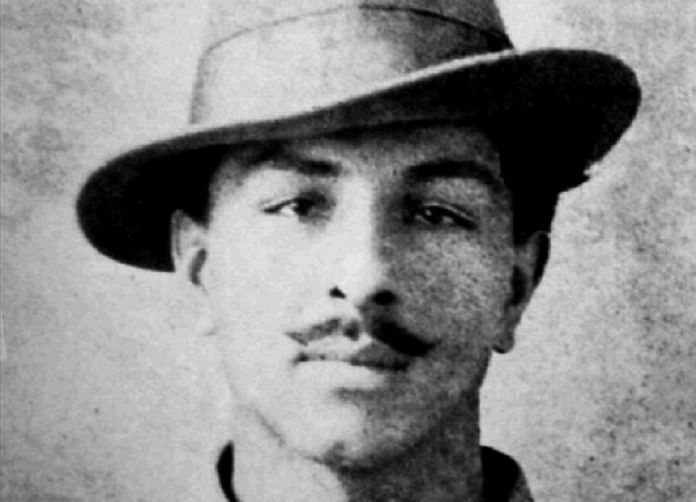New Delhi: Shaheed Bhagat Singh is among the rare figures from India’s freedom struggle who is celebrated today by all sides of the political spectrum.
The Left celebrates his socialist ideology, the Right his patriotism and nationalism, while the Congress acknowledges the revolutionaries’ contribution to the movement without necessarily agreeing with their methods.
The day of his martyrdom (Shaheedi Diwas, 23 March, 1931) as well as his birth (28 September, 1907) are commemorated every year with fervour across the country, especially northern India.
Birth of a revolutionary
Bhagat Singh was born in a well-off Sandhu Jatt family in Banga village of Lyallpur district in Punjab (now Faisalabad district in Pakistan). The family, which originally hailed from Khatkar Kalan village in Nawanshahr, was greatly influenced by Swami Dayanand Saraswati’s Arya Samaj, a Hindu reformist movement that rejects idol worship and doesn’t believe in any discrimination based on caste.
His grandfather Arjun Singh was among the few people who were given the sacred thread by Swami Dayanand himself. As a result, Bhagat Singh, unlike other Sikh children who went to a Khalsa school, went to the Dayanand Anglo Vedic (DAV) high school in Lahore. He went on to study at the National College in Lahore.
At the age of 16, Bhagat Singh won an essay competition organised by the Punjab Hindi Sahitya Sammelan. His essay ‘The Problem of Punjab’s Language and Script’ won the award. Later, in jail (1930), he wrote his famous essay ‘Why I am an atheist’ .
His revolutionary thoughts put him at odds with his father, and when the latter started pressurising him into marriage, Bhagat Singh ran away to Cawnpore (now Kanpur) at the age of 17.
Socialism
Following the ideas of Italian revolutionaries Giuseppe Mazzini and Giuseppe Garibaldi, the Naujawan Bharat Sabha was established in 1926, and Bhagat Singh became its general secretary.
Bhagat Singh and his peers were convinced that a revolutionary party must have a socialist agenda, and in 1928, they managed to change the name of the Hindustan Republican Association to the Hindustan Socialist Republican Association.
Although he considered Gandhi to be great, Bhagat Singh, like most other revolutionaries, was disillusioned by his non-violent ideology. The flashpoint for their separation from the Gandhi-led struggle was the Mahatma’s roll-back of the non-cooperation movement after the Chauri Chaura incident in 1922.
Murder of Saunders and the Central Assembly bomb
In 1928, at a protest demonstration, Lahore’s superintendent of police James Scott ordered a lathi charge where Lala Lajpat Rai was grievously injured. He later succumbed to his injuries.
To avenge his death, Bhagat Singh, along with Jai Gopal, Rajguru and Chandrashekhar Azad, planned to murder Scott, but mistakenly shot his assistant, John Saunders. The following day, the revolutionaries put up posters taking responsibility for the act.
Even after this, Bhagat Singh managed to stay underground and contribute to the revolutionary movement. Then, on 8 April, 1929, he and Batukeshwar Dutt threw a bomb in the Central Assembly Hall in Delhi, which wasn’t intended to kill anyone. He was arrested and was imprisoned for the bomb case.
His revolutionary tendencies were on display even at the Central Jail, when he led a hunger strike that shook the administration. The government, as a result, advanced the trial of Saunders murder case (later known as the Lahore conspiracy case), shifted him to the Central Jail in Lahore, and deferred his imprisonment for the bombing case.
After a long series of trials, Bhagat Singh, Rajguru and Sukhdev was sentenced to death on 7 October 1930 for murdering Saunders.
On 23 March 1931, 11 hours before the scheduled time, the trio was executed at the Lahore Central Jail.
Status as ‘martyr’
Although he is commonly referred to as ‘Shaheed’ Bhagat Singh, as per official records, he isn’t a martyr. In a response to an RTI in 2013, the union home ministry said it had no records to show Bhagat Singh’s ‘martyrdom’. This led then-PM Dr Manmohan Singh to say that irrespective of official records, “Bhagat Singh was a martyr in the supreme national cause of independence”.
In response to a demand to publish an official list of martyrs, the Punjab government admitted in May 2018 that it couldn’t confer such a title upon Bhagat Singh and his comrades because Article 18 of the Constitution does not permit the state to confer any title.
In January 2018, P.J. Kurien, Deputy Chairman of the Rajya Sabha at the time, had asked the government to remove all references to Bhagat Singh being a “revolutionary terrorist”, as mentioned in the book ‘India’s Struggle for Independence’ authored by the late historian Bipan Chandra and three co-authors, which was a part of the Delhi University’s history curriculum.
Also read: Remembering Dadabhai Naoroji, the Grand Old Man of India on his 193rd birth anniversary
On Bhagat Singh’s death anniversary in 2018, a museum dedicated to him was inaugurated at his ancestral village Khatkar Kalan in what is now Shaheed Bhagat Singh Nagar district in Punjab.
The Punjab government has also requested the Central government to name the newly-constructed Chandigarh International Airport after Shaheed Bhagat Singh, but the Haryana government, which owns a 24.5 per cent stake in the airport, has suggested the name of RSS leader Mangal Sein, a former deputy CM of Haryana. A final call hasn’t been taken on the name.







He would be first among equals in the hall of fame for original and real life angry young men and women from British Raj days; Mangal Pandey and Queen Manikarnika Tambe being other examples.